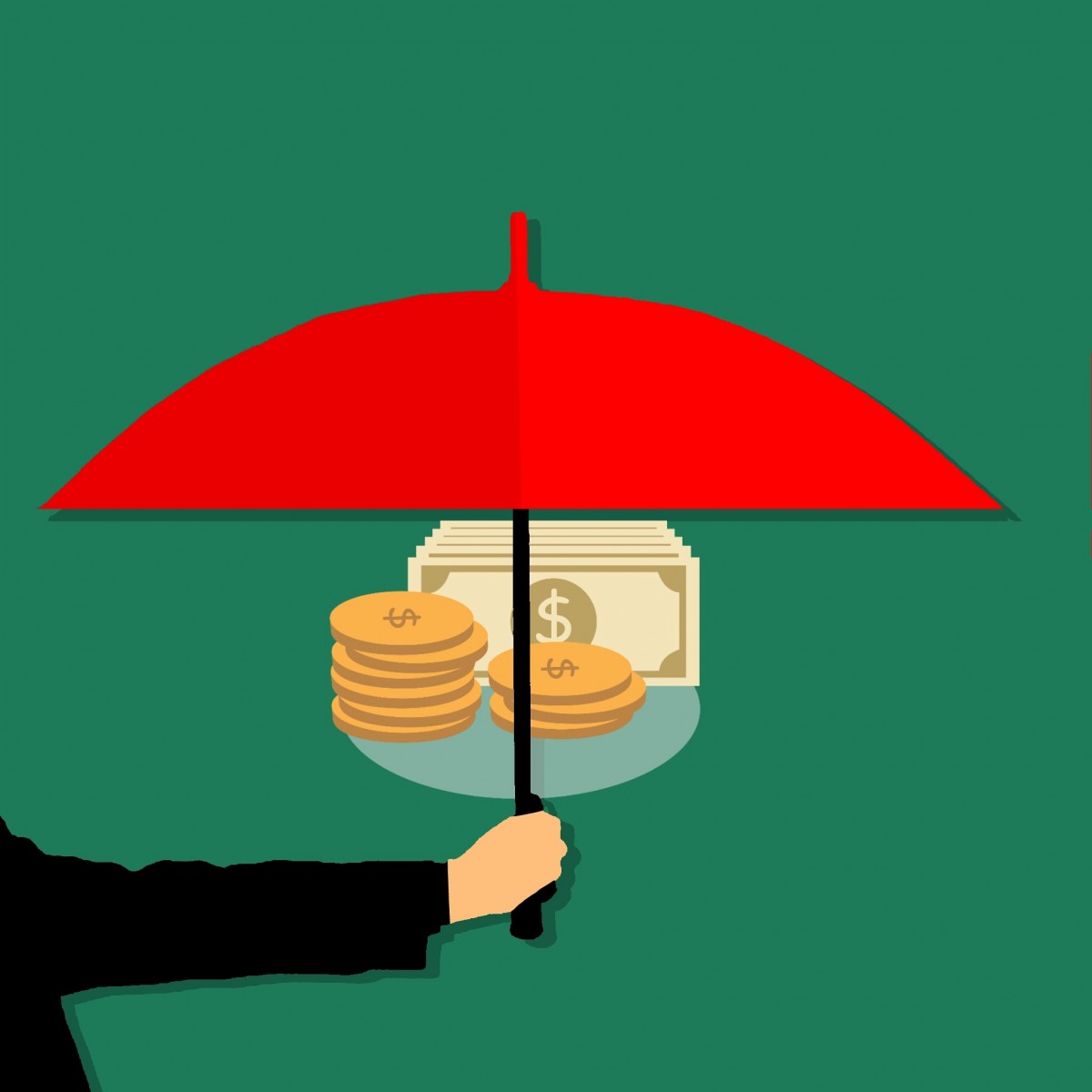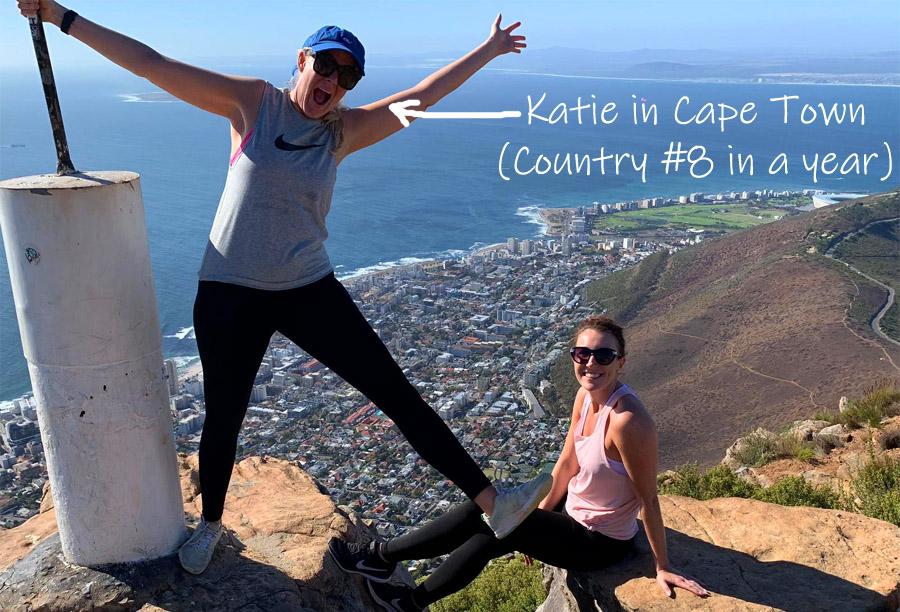
Companies want to sell you insurance for every possible risk in life.
Why? Because they make such high profit margins on it.
Which is precisely why I self-insure against financial risk whenever possible. Even so, you really do need some types of insurance coverage, even while you can skip other costly policies.
Here’s how to decide which policies you can skip and which you truly need.
What Is Self-Insuring?
When you self-insure, you set aside enough funds to cover against a given type of risk.
So, rather than buying a fully-insured plan to protect against a risk, you save or invest your own money. If the worst happens, you tap into that savings rather than filing a claim with an insurance company.
An emergency fund is a common form of self-insuring. It protects you against unexpected bills such as home repairs, car repairs, and job loss.
Which raises an important point: self-insuring lets you use your reserve for any emergency or cost, not just a specific type. When you buy an insurance policy, it only protects you against a few specific risks. Self-insuring leaves you the flexibility to use the money for whatever you need.
Example of Self-Insurance
Imagine you’re a single 55-year-old woman considering long-term care insurance. According to a survey by the American Association for Long-Term Care Insurance (AALTCI), the average annual premium is $2,675 (around $223/month).
To protect against the risk of needing to pay for nursing care later in life, you could, of course, buy that coverage. Or you could self-insure and invest that money on your own each month.
You start investing $223 per month in a real estate crowdfunding platform like Fundrise or Groundfloor. At a 9% return — a reasonable average for Fundrise and Groundfloor — you’d have $228,583 by the time you turn 80.
When you reach 80, you start needing a home health aide to come every day to care for you. The average monthly cost for a home health aide comes to $4,576 according to Genworth. You live another four years before shuffling off this mortal coil, and still come out around $10,000 ahead.
Or you don’t need care at all, and you die at 84 with an extra $334,900 (higher due to the extra four years of compounding). You pass that along to your children in your will.
Or you live until 84, have an extra $334,900, and then need four years of care. You die with an extra $115,252.
Or you start needing care at age 80, and live for another five years instead of four. In that case, you need to tap into your retirement savings to cover the shortfall of $45,977.
The Hidden Risk of Full Insurance Policies
As outlined above in the example of self-insurance vs. fully insured, self-insurance does come with some risk. In most scenarios, you come out far ahead by self-insuring. But in the worst-case scenarios, you probably would have been better off buying an insurance policy.
Still, that hinges on a key assumption: that your insurance policy will actually pay you.
I can’t tell you how many times I’ve seen insurance carriers find some loophole to avoid paying even when they should have. They could have added exclusions to your policy, or written the legal language in a way that leaves them plenty of loopholes, or they simply don’t pay on the assumption that you can’t afford to hire good attorneys to sue them and win.
I fully admit it: I’m insurance-skeptical. I have zero confidence in insurance corporations to have my back when I need them most. They love to promise the stars when they want you to open your wallet and buy a policy, but aren’t so quick to open their wallet when you have a claim.
Buyer beware.
Types of Insurance You Can Self-Fund
Some types of insurance lend themselves well to self-insuring versus buying full coverage. Others you really do need full insurance protection — more on them later.
For the following insurance types, consider self-insuring.
Life Insurance
As someone pursuing financial independence and early retirement, my wife and I mostly live on her modest salary, and save and invest my income. That kind of high savings rate comes with some huge hidden benefits.
To begin with, we don’t need life insurance. If one of us kicked the bucket prematurely, the other would be able to continue living and raising our daughter on a single income.
Life insurance is a relic from the era of a single breadwinner. If your household relies on one breadwinner — or both spouses working — and an earner dies, the surviving family members are in trouble.
But if your household can continue paying its bills even if one partner passes, you don’t need life insurance.
Long-Term Disability Insurance
For the same reason, my family doesn’t buy long-term disability insurance. Losing one of our incomes wouldn’t cripple us financially.
Which means we can take the money we would have spent on life insurance and disability insurance premiums and invest the money. It can compound and build wealth for you in the background, untouched until you need to tap into it.
Long-Term Care Insurance
As outlined in the example of self-insuring above, you can funnel money into investments rather than paying the annual costs for long-term care insurance. If you end up needing care eventually, you can tap into those investments to cover the cost.
Electronics Warranties & Insurance
Imagine a company asks you if you want to insure your mobile phone for $15/month, with a $200 deductible. Rather than pay them that money, you invest $200 then set up automated monthly investments of $15.
In all likelihood, nothing happens — you don’t drop your phone in a toilet or run over it with your car. After three years, you’d have around $850 in your portfolio, assuming a 9% return. You could use that to buy a new phone, or you could let it keep compounding.
If you do break your phone, you can tap your invested savings. It may not be enough to buy an expensive flagship phone, but that’s the risk you run and the price you pay for breaking your phone.
Health Insurance Coupled with an HSA
A health savings account or HSA offers a type of self-insurance. You use it to save money like a checking account, or invest money like a brokerage account, and then use the funds to cover healthcare costs before reaching your annual deductible.
Which raises a crucial point: you do still need a health insurance policy. But if you don’t get health benefits through your employer, you can buy a low-cost, high-deductible health insurance policy, rather than an outlandishly expensive one.
I particularly love the tax benefits that come with HSAs, the best of any tax-sheltered account. Not only can you deduct contributions, but the money grows and compounds tax-free, and you pay no taxes on withdrawals for qualified medical expenses.
In fact, the combination of a high-deductible health plan and an HSA makes for great health coverage for early retirees.
Home Warranties
Home warranties come with the same fundamental problem as other types of insurance: the math is in the corporation’s favor.
They hire armies of actuaries to run a detailed statistical and probabilistic analysis on the odds of actually having to pay out. Then they make sure they charge enough to earn a huge profit margin even after those payouts.
When you buy a home warranty, the insurer knows that the odds of you filing a claim on new appliances and other home parts are low. So it’s an easy way for them to earn some extra money off of buyers of new homes.
Just set aside some extra savings as an emergency fund in case something does break at your property.
Travel Insurance
Another ripoff, travel companies from airlines to third parties like Expedia and Travelocity all try to upsell you on buying travel insurance.
If you know you need extra flexibility and might need to change your travel plans, go ahead and buy it. Otherwise just pad your emergency fund.
Insurance Policies You Do Usually Need
Much as I distrust insurance companies, I also acknowledge that you do need protection against certain freak circumstances and risks.
Don’t skimp on the following types of insurance.
Health Insurance
Everyone needs health insurance.
Yes, you can partially self-insure with an HSA. But you still need to couple your HSA with medical insurance.
The risk of a major health catastrophe in any given year is relatively low. But over your lifetime, you will almost certainly experience a major health crisis, and possibly several. It’s not a matter of if you’ll have a significant health challenge, but when.
And the older you get, the greater the odds of it happening sooner rather than later.
Auto Insurance
If you own a car, you need auto insurance.
I don’t own a car; I walk, bike, or Uber everywhere. So I don’t have car insurance, but when I did own one, I had not only liability coverage (for the other person’s car) but also collision coverage (for my car).
(article continues below)
Homeowners Insurance & Flood Insurance
If you have a mortgage, your lender requires you to have homeowners insurance.
It covers risks like fire and storm damage, and sometimes others as well. I’ve experienced fire damage as both a homeowner and a landlord — it happens more often than you think.
So even if you don’t have a mortgage, buy a homeowners policy.
You only need flood insurance if you live in a flood plain, which your lender will double check before signing off on your loan. But even if you buy your home in cash, double check if it’s in a flood plain, and buy coverage if so.
Landlord Insurance: Both Property & Rent Default
Likewise, if you have a rental property mortgage, you need landlord insurance to protect against property damage. And if your policy lapses, your lender will buy a policy and charge you for it.
Note that landlord insurance covers the building, but not the belongings inside. The tenant’s renter’s insurance policy covers their personal property, if they have it (and you should require them to buy it, as a lease clause). Check out Sure for competitive rates on landlord insurance.
But landlords should also consider another type of insurance coverage. Rent default insurance only costs a few hundred dollars per year, and pays you rent if your tenant stops paying it. You keep collecting rent until you complete the eviction process and sign a lease contract with a new tenant.
I’ve actually filed claims on these policies, and had no problems collecting rent from the insurance.
Bottom Line: Self-Insurance vs. Fully Insured
There are a few types of insurance you really should buy. But in most cases, self-insuring makes more sense.
Insurance companies know the math. They know that they’ll collect far more from their average customer than they’ll pay out. That is, when they bother to pay out at all, rather than finding a loophole to avoid it.
That said, self-insuring requires discipline. You actually have to set aside money each month for your emergency fund, for your investments, for your self-insurance. And most Americans would rather just spend every penny they earn on new clothes, new gadgets, new trendy restaurants.
Self-insurance is a hidden benefit of the FIRE lifestyle, a perk of a high savings rate. The more of your income you save and invest, the less insurance you need to buy. Which, in turn, lets you save and invest more money in a virtuous cycle.
When you retire at 40, you don’t need life insurance, or long-term disability insurance, or many other types of insurance. I’ll keep that money in my own portfolio, thank you very much.♦
What is self-insuring in your own personal finances? What questions do you have about being fully insured vs. self-insurance?
Keep Getting Financially Savvier:
About the Author

G. Brian Davis is a landlord, real estate investor, and co-founder of SparkRental. His mission: to help 5,000 people reach financial independence by replacing their 9-5 jobs with rental income. If you want to be one of them, join Brian, Deni, and guest Scott Hoefler for a free masterclass on how Scott ditched his day job in under five years.



























I love the idea of self-insurance. Spending emergency funds for important reasons outside my budget take away piles of anxieties. But I can’t take away some of the full insurance policies such as health insurance, and property insurance… Both have pros and cons but I would like to balance both. Thanks for bringing this up to my attention. This makes me realize that I have to take saving emergency funds seriously!
Yeah you definitely need health insurance and property insurance! But you can self-insure against some other types of risk.
I’ve been a landlord since 1981 . I’ve paid a total of $80,000.00 in insurance over that time with claims totaling 19,000. Their profit, $61,000.00!!! Is there a way I can self insure?
For rental properties, you need landlord insurance if you have a mortgage against the property. But if you don’t have a mortgage you can self-insure. Just make sure you set aside enough each month to truly protect yourself in the event of major property damage.
Oh, Thank God! Thanks, Brian for sharing such important information. Keep sharing!
Glad to hear the article was helpful George!
My husband and I have been W2 employees our whole life and now we are self employed and I am struggling with what to do as far as health insurance. I get bombarded with calls and text for health insurance which I feel like screams scam..and have been trying to figure out best choice for us. I loved the article and agree but not sure where best place to look for self employed.
Hi Teresa, if you’re both pretty healthy, I’d look into a high-deductible healthcare plan combined with an HSA. You can also explore the ACA exchanges to price out plans. Best of luck!
I never consider insurance in any form since I am still young but I realized that it is not right. Well, it is better to get an insurance late than never. Thanks for sharing!
Not everyone needs every single type of insurance. And in some cases, it makes more sense to self-insure!
Thanks for sharing this information!
Glad it was helpful Adam!